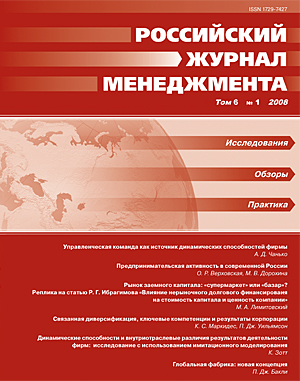Глобальная фабрика: новая концепция
Аннотация
В статье вводится и объясняется концепция глобальной фабрики (global factory). Глобальная фабрика выполняет роль некой глобальной фирмы или глобальной сети фирм, которая организует производство, дистрибьюцию, маркетинг, разработку, управление брендами и осуществление инноваций для некоторого набора продуктов и услуг. Как будет показано, эти товары и услуги, а также их компоненты, ресурсы и концепции могут не принадлежать какойлибо единственной фирме в каждый конкретный момент времени, а управляться системой, которую мы называем глобальной фабрикой.
Ключевые слова:
глобальная фабрика, многонациональные компании, международная стратегия, прямые зарубежные инвестиции, глобализация, международное развитие
Скачивания
Библиографические ссылки
REFERENCES IN LATIN ALPHABET
Загрузки
Опубликован
Как цитировать
Выпуск
Раздел
Лицензия
Статьи журнала «Российский журнал менеджмента» находятся в открытом доступе и распространяются в соответствии с условиями Лицензионного Договора с Санкт-Петербургским государственным университетом, который бесплатно предоставляет авторам неограниченное распространение и самостоятельное архивирование.





